 https://media.airfactsjournal.com/wp-content/uploads/2025/02/20151025/jackon-hole.jpeg
480
640
Duncan Witte
https://media.airfactsjournal.com/wp-content/uploads/2024/09/03140241/AF_Logo_24.png
Duncan Witte2025-03-07 08:55:452025-02-20 15:13:44Friday Photo: The Tetons From Jackson Hole Airport (KJAC)
https://media.airfactsjournal.com/wp-content/uploads/2025/02/20151025/jackon-hole.jpeg
480
640
Duncan Witte
https://media.airfactsjournal.com/wp-content/uploads/2024/09/03140241/AF_Logo_24.png
Duncan Witte2025-03-07 08:55:452025-02-20 15:13:44Friday Photo: The Tetons From Jackson Hole Airport (KJAC)NEW ARTICLES
OUR MOST RECENT POSTS
Air Facts was first published in 1938 by Leighton Collins, dedicated to “the development of private air transportation.” It’s a different world now, and it’s a different Air Facts. Relaunched in 2011 as an online journal, Air Facts still champions, educates, informs and entertains pilots worldwide with real-world flying experiences. More…
 https://media.airfactsjournal.com/wp-content/uploads/2025/02/20151025/jackon-hole.jpeg
480
640
Duncan Witte
https://media.airfactsjournal.com/wp-content/uploads/2024/09/03140241/AF_Logo_24.png
Duncan Witte2025-03-07 08:55:452025-02-20 15:13:44Friday Photo: The Tetons From Jackson Hole Airport (KJAC)
https://media.airfactsjournal.com/wp-content/uploads/2025/02/20151025/jackon-hole.jpeg
480
640
Duncan Witte
https://media.airfactsjournal.com/wp-content/uploads/2024/09/03140241/AF_Logo_24.png
Duncan Witte2025-03-07 08:55:452025-02-20 15:13:44Friday Photo: The Tetons From Jackson Hole Airport (KJAC)
Teaching International Student Pilots
I was thereAfter busting a major milestone in their training (the initial solo or any of the three checkrides they had to pass in the T-38 syllabus), students would get one or two extra flights with an experienced IP. They would then fly an “Initial Progress” check with a squadron supervisor. If they passed that check, they continued with the program. Failing the Initial Progress check meant they got additional flights with another experienced IP and then flew a “Final Progress” check. If they failed that flight, they would be eliminated from the program.

Why Crash Videos and Social Media Don’t Mix
OpinionI get that we all speculate in private on crashes since we have a natural tendency to try to understand tragedy after it unfolds. But when we speak publicly on social media or even to our friends and family at home, we become ambassadors for aviation. And as ambassadors, I firmly believe we need to steer these conversations toward supporting our fellow pilots who were involved in the incident as well as understanding how we can prevent it from happening again. And any online content that goes against these tenets should be strictly avoided or even better, unsubscribed.

I Am UNSAFE Checklist—Lessons Learned on a Fateful Night
I Can't Believe I Did ThatVery soon I was on the approach and thought I could still make 06C. The ATIS called out the overcast at 800’ AGL, the minimum I needed (mistake #5—not mine, but it counted anyway.) I held at 800’, assuming I’d see the runway lights below me and then I could continue to 06C. As I crossed the runway threshold, it was solid IMC and I had to go missed. I asked the Tower what the current ceiling was, and the response was that the ATIS was old and the ceiling was actually 400’ and you’ll have to go around.

A Great Flying Experience on the Ground
I was thereThe B-17 is said to be one of the most recognizable warplanes of its era, known to people who can’t identify any other airplane by name. This one came with a bonus, a wartime B -17 pilot who was there promoting a book.

Flying “Low VFR” to the Indy 500
I was thereJust as ATC said almost three hours later, the sky opened to a warm bright sunny day, coming out the other side we wanted to land to get fuel. ATC said if you land now that storm you just flew under will be on top of that airport and asked if we could make it another 50 miles to give time to fuel and get back in the air.
John’s Blog
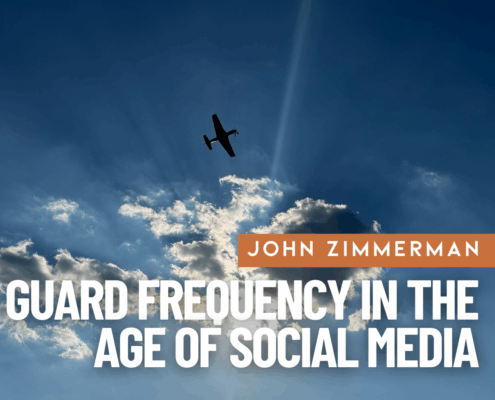
Guard frequency in the age of social media
John's blogYes, this is an “old man yells at cloud” article. Yes, I can already hear the jokes about the “guard police.” I don’t care. It needs to be said: Guard frequency (121.5) has become a national embarrassment, a sign that our self-absorbed social media culture has spread to the once-boring world of aviation. We need to do better.
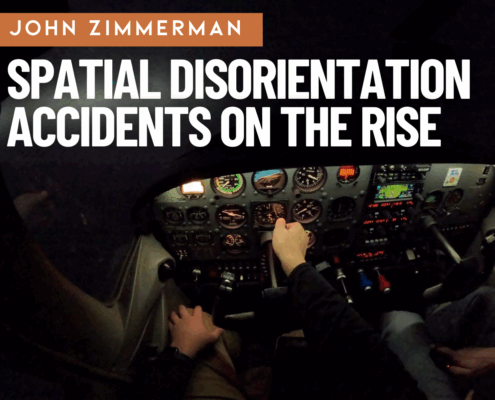
Why are spatial disorientation accidents on the rise?
John's blogResearchers from the FAA show that SD accidents have not declined since 2003—in fact, quite the opposite. You might assume the widespread adoption of tools like datalink weather, modern autopilots, reliable AHRS, and electronic flight bag apps would make VFR-into-IMC (the classic SD accident scenario) much less common. It’s a great theory, but the numbers don’t support it.

The aviation community is alive and well
John's blogBefore the expletive could even leave my mouth, one of the FBO employees offered to lend me the crew car. I assumed the crew car option would be impossible, or at least impossibly bad manners, since the round trip would be nearly two hours and the FBO was closing soon. But he wouldn’t hear it: “take all the time you need and just drop the keys off with the night security guard. We appreciate your business.”
I Can’t Believe I Did That
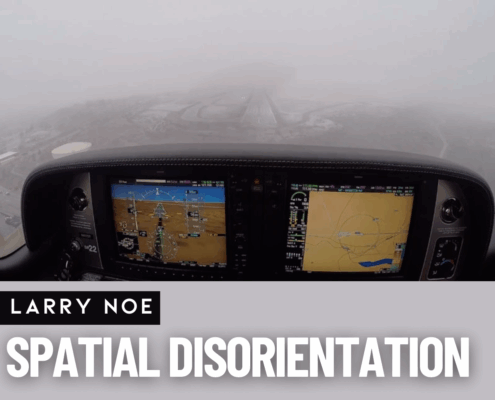
Spatial Disorientation: I Thought It Couldn’t Happen to Me
I Can't Believe I Did ThatI began climbing to get between layers, intending to stabilize and then request IFR. But as I entered the clouds, what I thought could never happen did. I was in an unusual attitude: 45 degrees banked and nose down. For a moment, I considered pulling the CAPS parachute. I had often wondered if I’d have the presence of mind to use it in a real emergency. After this, I know the answer is yes. But I also realized I could recover.

I Made Every Flight Training Mistake Humanly Possible
I Can't Believe I Did ThatFlight training is rarely a straight line, but for Nick Smith it turned into a winding, four–year journey full of delays, false starts, and unexpected costs. In this brutally honest account, he shares the mistakes he made—so future pilots don’t have to repeat them. His story is both a cautionary tale and a reminder that perseverance can still lead to the certificate.

A Quarter Tank and a Prayer
I Can't Believe I Did ThatI was watching the fuel gauges drop before my eyes. I elected to continue to ECG rather than turn back. I was on a direct course. The Norfolk controller wished me luck—not the most reassuring sign—and handed me off to ECG Tower, who had already been briefed.
Opinion
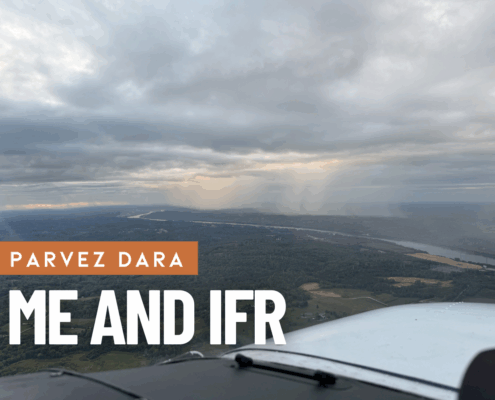
Me and IFR
OpinionDuring another smooth cloudy day, a relative—who shall remain unnamed—asked if I wanted to fly. Weather was marginal VFR; he had his IFR rating. At 3,000 feet, we entered clouds. I panicked briefly, deer-in-headlights style. Calmly, he asked me to hand him his foggles from the seat pocket. Did that give me confidence? Not really. But the flight remained calm and uneventful. He wore view limiters in clouds for comfort—something I couldn’t quite fathom at the time.
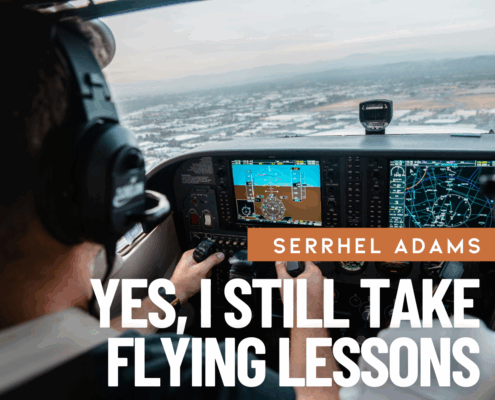
Yes, I Still Take Flying Lessons
OpinionI approach every flight with an instructor with a plan of my own. I don’t just show up because the calendar says it’s time. I bring specific goals, real-world questions, and skills I want to sharpen. My annual IPC isn’t about checking FAA boxes; it’s about tackling challenges I’ve faced over the year and flying approaches that have pushed me.

Generally Affordable? The Truth About Flying Costs
OpinionThe economics of flying is not for the faint of heart. In fact, the average cost of just getting your “license to learn” is now hovering around the $20,000 mark. And if that number doesn’t faze you, then let me sprinkle in some rampant inflation, a tight insurance market, and just the high opportunity cost of staying current—let alone proficient—into the mix.
More Articles
Recent Posts
Email newsletter
Write for us!
Did you know that most of the articles at Air Facts are written by readers like you? You do not have to be Richard Collins or Ernest Gann – simply a GA pilot with a story you’d share with friends sitting in the hangar.

